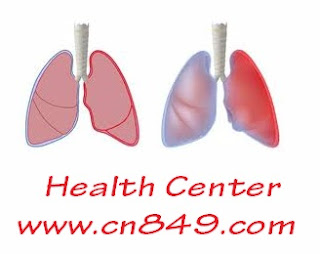Pleurisy and Pleural Effusion
 |
| Pleurisy and Peural Effusion |
Pleurisy
Definition:
Inflammation of the pleura, both partial ( which covers the surface of the chest wall, mediastinum, an upper surface of the diaphragm), and the visceral pleura which covers the entire surface of lungs.When membranes rub against each other, esp. during inspiration, severe chest pain knife like occur may be localized or radiated to shoulders and abdomen.
It might be either:
1- Acute fibrinous ( dry ) pleurisy – the only a small amount of exudates are formed.2- Pleurisy with effusion – a large number of fluids are secreted and collected in the space between the pleural layers. the fluids can compress the lungs.
Aetiology:
1- Dry pleurisy – pneumonia.2- Pleurisy with effusion – T.B.( tuberculosis), carcinoma of the lung, cardiac disease, renal disease, systemic infections, pneumonia, pulmonary embolism.
Signs and symptoms:
1- Sharp pain during respiration (resulting from the rubbing of the two surfaces of visceral and partial pleural layers together), especially with dry pleurisy.2- a Dry cough.
3- Fatigue.
4- Shortness of breath.
Diagnosis:
Chest x-ray, sputum culture and thoracentesis.Treatment:
Discover and treat the cause.1- Analgesic, application of heat or cold relieve the pain.
2- Bed rest.
3- Deep breathing and coughing.
4- Oxygen therapy.
5- Thoracentesis if a large number of fluids are collected ( drainage of the fluids).
Pleural Effusion
Definition:
A collection of fluids in the pleural cavity.Fluids could be insulated ( filtrate of plasma ) or exudates (extravasation of fluids), blood or purulent.
Causes:
- Systemic disease as ascites , CHF, or renal failure.- Inflammation by bacteria or a tumour involving the pleura.
- Nephritic syndrome, bronchogenic carcinoma.
Signs and symptoms:
Fever, chills, chest pain, with cancer dyspnea and coughing.The area involved revealed minimal or no breath sounds and will be dull on percussion.
Diagnosis:
Chest x-ray, U/ S, thoracentesis, acid-fast bacillus strain, CBC, and chemistry studies.Treatment:
Discover and treat the cause.Remove the fluid.
Chest tube.
Thoracentesis:
Purpose:
To remove fluid and /or air from the pleural cavity.
To obtain a specimen for analysis ( pleural biopsy).
To relieve dyspnea.
READ MORE:
Pneumonia
Preterm Labor
Raynaud's Disease and Buerger's Disease

I would like to thank Ultimate Life Clinic for reversing my father's Amyotrophic Lateral Sclerosis (ALS). My father’s ALS condition was fast deteriorating before he started on the ALS Herbal medicine treatment from Ultimate Life Clinic. He was on the treatment for just 6 months and we never thought my father will recover so soon. He has gained some weight in the past months and he is able to walk with no support. You can reach them through there website www.ultimatelifeclinic.com
ReplyDelete